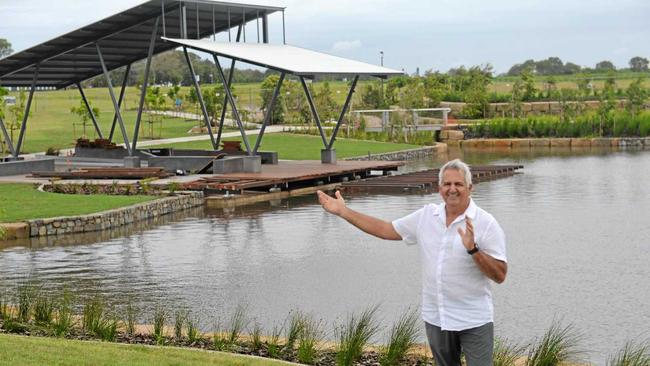How walking-friendly neighbourhoods can reduce obesity
But model code to ensure healthy living could constrain builders and cost ratepayers.

Mackay
Don't miss out on the headlines from Mackay. Followed categories will be added to My News.
A NEW model code for Queensland neighbourhoods is in the works and its goal is to create a healthier and more active way of life.
Planning Minister Cameron Dick said the plan, now released for public consultation, was designed to improve health throughout the state and would be compulsory for all new developments.
"Our built environment has a huge impact on how active and healthy people are. With some relatively simple improvements to the current planning framework, we can better ensure all new developments are walkable and encourage active living," Mr Dick said.
Elements of the model code could be become mandatory by the end of 2019.
"While some councils and developers are exceeding the benchmarks we are setting, we want to make sure all new development meets community expectations," Mr Dick said.
"This will provide greater certainty for the development community about what is expected of new development and ultimately provide better designed communities for home buyers and renters."
Elements of the code which could become mandatory by the end of the year include, grid-like street networks with fewer cul-de-sacs, footpaths complemented by trees on both sides of most streets, blocks no longer than 130m with longer blocks having mid-block pedestrian breaks, parks and open spaces within comfortable walking distance of every dwelling.
Pointglen development manager Paul Thompson is connected to the ongoing residential development Shoal Point Waters, at Mackay's Northern Beaches.
"Shoal Point Waters already meets several elements of the code the State Government is hoping to implement and incorporates a man-made lake and landscaped buffer zones," Mr Thompson said.
"While the code has some great ideas that most developer are already using, I think it goes a little further than it needs to.
"Cul-de-sacs do serve a purpose where development ends. If there is something to connect to, we install a footpath connection.
"You don't want to go creating more roads than needed, because at the end of the day those roads need to be maintained by council and that eventually comes out of the ratepayers' pockets."
Heart Foundation Queensland CEO Stephen Vines said too many Queenslanders were missing out on physical activity and creating walking-friendly neighbourhoods would address the state's growing obesity crisis.
"We must find ways to encourage residents to get moving and leave the car at home more often," Mr Vines said.
"Neighbourhood design plays an important role in building healthier communities, and we're pleased to see this model code includes Healthy Active by Design principles from the Heart Foundation."
Consultation is open until September 1, 2019.
To find out more and to have your say visit haveyoursay.dsdmip.qld.gov.au/creating-healthy-communities
Originally published as How walking-friendly neighbourhoods can reduce obesity


